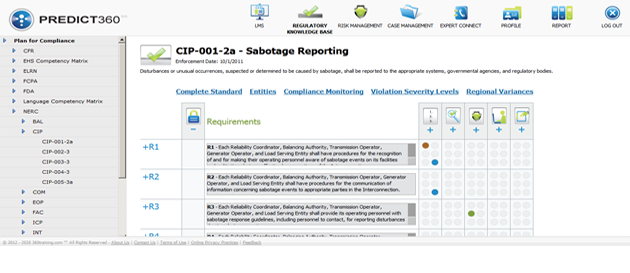Home/ Blog / The Core Functions of GRC Software
GRC is ever-changing and constantly evolving, the requirements needed in order to have the best practices are dynamic and are always growing. Achieve competitive advantage by leveraging on new technologies that will integrate the GRC framework to promote visibility, produce accurate reports needed for operational decision making, and to ensure integrity-driven performance. GRC software is a key component in the implementation and maintenance of GRC processes.
What is the role of software in the constantly changing GRC environment? Here are the core functions of GRC software that will shape the future of organizations:
- An integrated regulatory change management platform that serves as a database for delineating GRC components that will manage behavioral risk and audit gaps as a result of regulatory changes. It provides the organization a single platform to keep track of the regulatory changes, to prevent organizations from over and under complying with the regulations. Organizations need a sophisticated and scale-able way to manage the regulations that apply to them as over complying and under complying with regulations or standards can be very costly.
- As shown in the figure below, PREDICT360, a regulatory compliance software on the cloud allows you to manage an Applicability tool to help you assess which regulatory applies to your organization.
- Content and document-centric – having a centralized repository of policies and procedures that are communicated and distributed efficiently across the enterprise. It enables organizations to prevent policies and procedures from disclosure to unauthorized individuals or systems, it ensures integrity-driven performance, and seamless document management that allows users to collaborate and manage version control. Additionally with one document location, your employees will have access to the documents they need at all times.
- Reporting – provides real-time data. It allows organizations to scale the tracking of accreditation, approvals, renewals, permitting and licensing of assets/products with regulatory bodies and produce accurate reports needed for operational decision making.
- Workflow engine – automating tasks related to regulatory control, allowing information to be shared easily across the enterprise, promote visibility and consistency in all aspects of GRC components and create new lines of communication.
GRC Pundit and Analyst, Michael Rasmussen, expressed his views on the different GRC frameworks, and provided a complete GRC architecture based on the GRC Capability Model™ that enables organization to:
- Achieve business objectives
- Enhance organizational culture
- Increase stakeholder confidence
- Prepare and protect the organization
- Prevent, detect and reduce adversity
- Motivate and inspire desired conduct
- Improve responsiveness and efficiency
- Optimize economic and social value
GRC market in general has plenty of room to grow before realizing its full potential and completely meeting the needs of many companies.
*All images are property of their respective owners.
*The author’s views and opinions are entirely his or her own and may not reflect the views and opinions of 360factors.
Request a Demo
Complete the form below and our business team will be in touch to schedule a product demo.
By clicking ‘SUBMIT’ you agree to our Privacy Policy.




